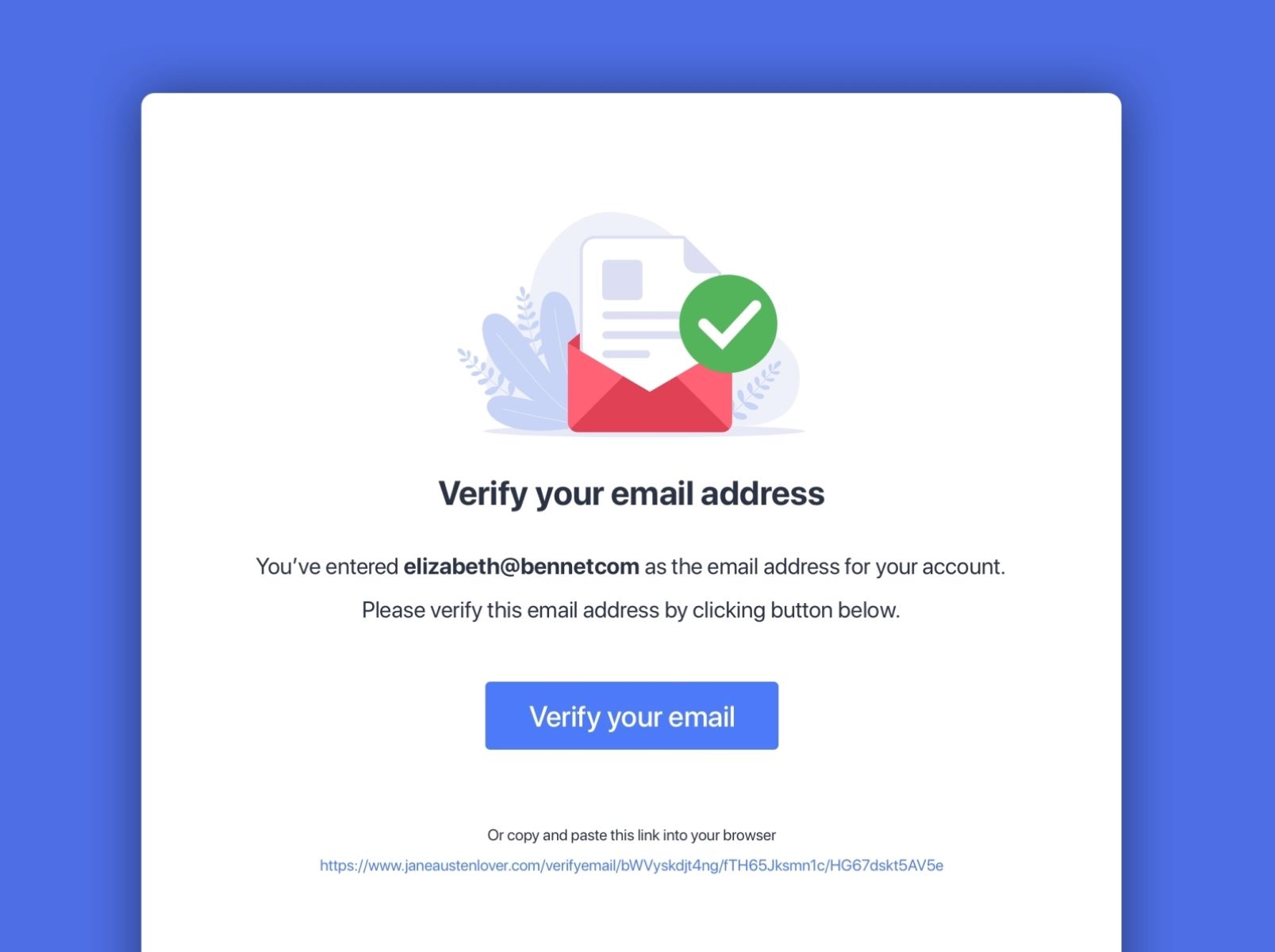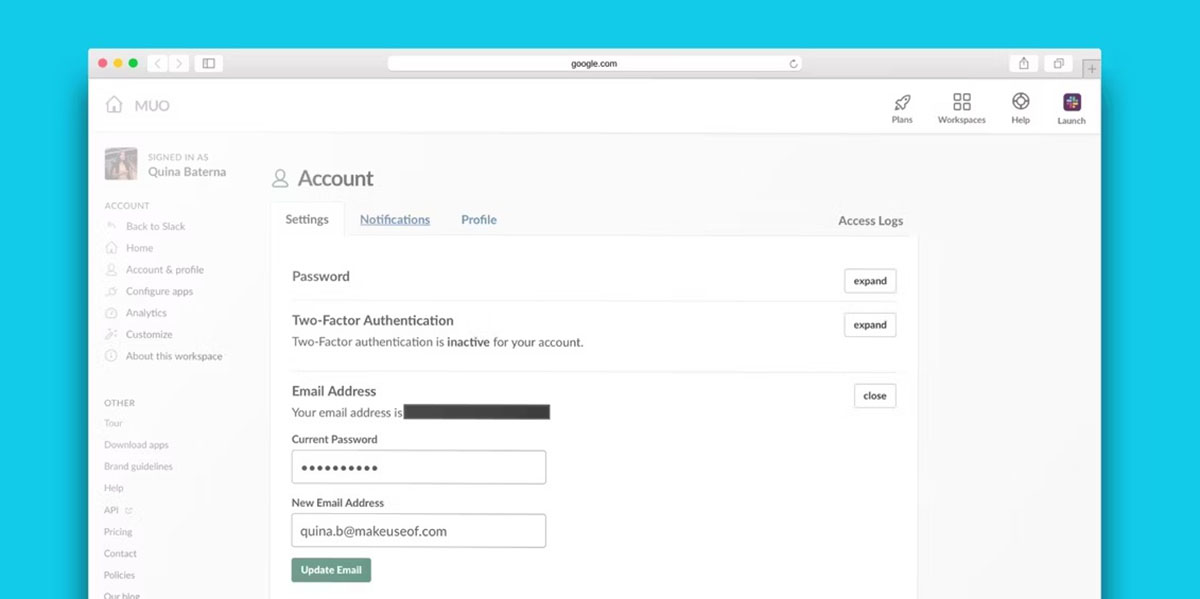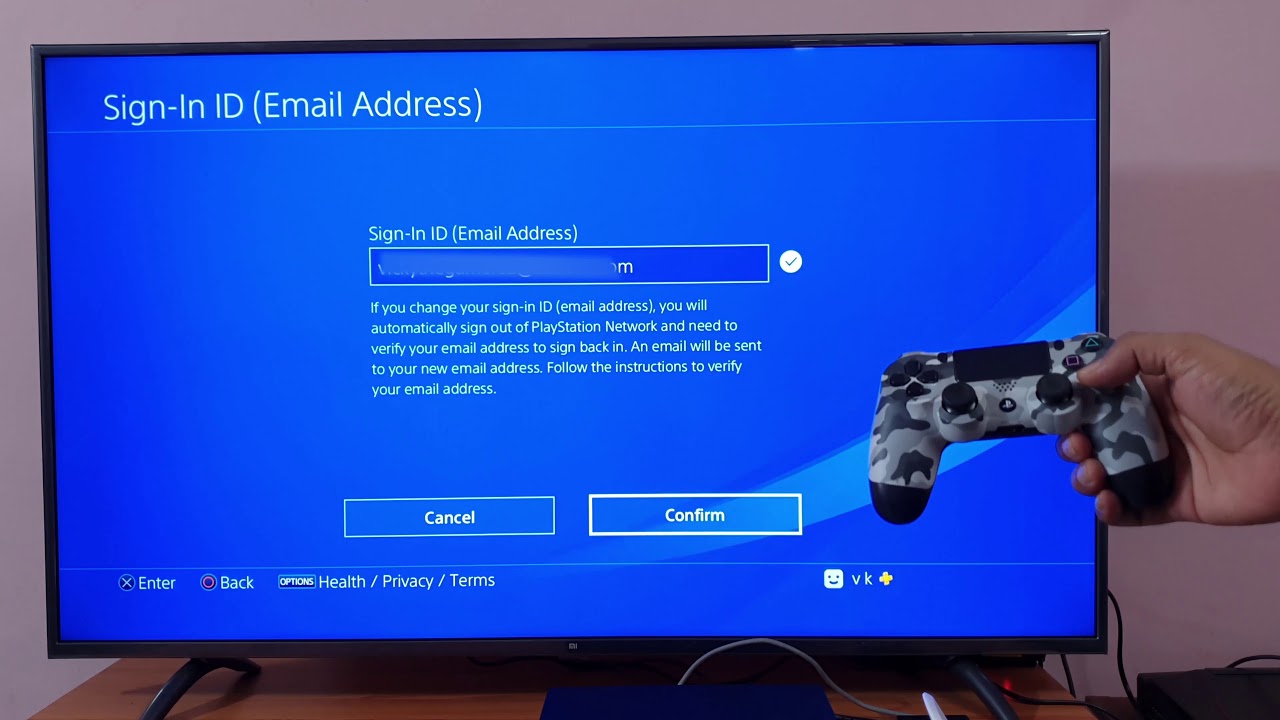Introduction
Email verification is an essential process that ensures the accuracy and validity of an email address. In today’s digital age, where communication is predominantly conducted via email, it is crucial for businesses and individuals alike to verify the email addresses they interact with. This verification process helps prevent the dissemination of inaccurate or misleading information, avoid a high bounce rate, protect against fraudulent activities, and maintain a good sender reputation.
With the exponential growth of spam, phishing, and fake email addresses, email verification has become even more critical. It helps businesses ensure that their email outreach efforts reach the intended recipients and reduces the chances of messages landing in the spam folder. It is also beneficial for users as it helps them avoid unnecessary emails, spam, and potentially harmful messages.
So, how does email verification work? The process involves various methods and techniques to validate an email address’s existence and accuracy. By implementing these verification methods, businesses and individuals can ensure that they are engaging with real users and maintaining a high level of data quality. Let’s explore some common methods of email verification.
Why is Email Verification Important?
Email verification plays a crucial role in maintaining the accuracy and integrity of email communication. Here are some key reasons why email verification is important:
1. Enhances Deliverability: Verifying email addresses ensures that messages reach valid and active recipients. This reduces the chances of emails bouncing back or being marked as spam, improving email deliverability rates.
2. Protects Against Bots and Fraudulent Activities: By implementing email verification, businesses can safeguard themselves against fraudulent activities such as fake sign-ups or automated bot registrations. This helps protect sensitive customer data and maintain the authenticity of their user base.
3. Minimizes Invalid Data Entry: Email verification helps prevent users from accidentally or deliberately entering incorrect or invalid email addresses. This reduces the likelihood of communication errors and ensures that important messages and notifications reach the intended recipients.
4. Reduces Spam Complaints: Sending emails to invalid or non-existent email addresses can increase the likelihood of spam complaints. By verifying email addresses beforehand, businesses can avoid spam traps and maintain a good sender reputation, which is crucial for successful email marketing campaigns.
5. Saves Time and Resources: Validating email addresses in real-time saves businesses time and resources by eliminating the need to manually clean up email lists or resend messages due to bounced emails. It ensures that marketing efforts are focused on genuine prospects and increases the efficiency of email marketing campaigns.
6. Improves Customer Engagement: By verifying email addresses, businesses can ensure that their messages are reaching engaged and responsive recipients. This leads to better customer engagement, increased open rates, and higher click-through rates, resulting in more effective communication and better business outcomes.
Email verification is an integral part of email marketing, lead generation, and customer relationship management. It helps businesses maintain a clean and valid email database, ensuring that their messages reach the right people at the right time. By implementing email verification practices, businesses can improve their email deliverability, protect against fraudulent activities, minimize errors, and enhance their overall email marketing performance.
How Does Email Verification Work?
Email verification employs various methods and techniques to validate the existence and accuracy of an email address. The process typically involves the following steps:
1. Syntax Check: The first step in email verification is to check the syntax or format of the email address. This involves verifying if the email follows the standard formatting rules, such as having the correct format of “username@domain.com” and not containing any illegal characters or spaces.
2. Domain Check: After the syntax check, the verification process moves on to validate the domain of the email address. It involves checking the DNS (Domain Name System) records of the domain to ensure that it exists and is configured correctly. This step helps identify typos, invalid, or non-existent domains.
3. SMTP Validation: SMTP (Simple Mail Transfer Protocol) validation is another common method used in email verification. It involves establishing a connection with the email server to validate the email address’s mailbox. The verification process sends a test message to the recipient and checks if it gets successfully delivered or if an error occurs, indicating that the email address is invalid.
4. Role Account Check: Role accounts are generic email addresses such as “info@domain.com” or “support@domain.com” that are commonly used for specific purposes. Email verification includes a role account check to identify these generic email addresses and determine if they are acceptable for communication purposes.
5. Disposable Email Check: Disposable email addresses are temporary email accounts that users create for short-term use. These addresses are often used for spamming or fraudulent activities. Email verification includes a check to identify and reject disposable email addresses, ensuring that only genuine and long-term email addresses are accepted.
6. DNS Validation: DNS validation involves checking the domain’s DNS settings for various email-related records, such as MX (Mail Exchanger) records, SPF (Sender Policy Framework) records, and DKIM (DomainKeys Identified Mail) records. These records help ensure the domain’s authenticity, email delivery authorization, and protect against email spoofing or phishing attempts.
Email verification services and tools automate these steps, making the process more efficient and accurate. They provide real-time verification results, allowing businesses and individuals to instantly validate email addresses before engaging with their recipients.
By implementing email verification methods, businesses can ensure that their email communications reach valid and active recipients, minimizing the chances of bounce rates, spam complaints, and fraud. This leads to better email deliverability, increased engagement, and ultimately, more successful email marketing campaigns.
Common Methods of Email Verification
Email verification involves utilizing various methods and techniques to validate the accuracy and validity of an email address. Here are some common methods of email verification:
1. SMTP Validation: SMTP (Simple Mail Transfer Protocol) validation is a widely used method that verifies the existence of an email address by connecting directly to the recipient’s mail server. It initiates a request to send a test message and checks the server’s response to determine if the email address is valid and active.
2. Regex Match: Regex (Regular Expression) matching is a technique that validates the syntax and format of an email address. It uses specific patterns to determine if the email address follows the standard format of “username@domain.com”. This method helps identify and reject improperly formatted email addresses.
3. Domain Check: Domain checking involves verifying the domain of the email address to ensure its existence and configuration. It performs checks on the DNS (Domain Name System) records of the domain to validate its authenticity. This method helps identify typos, invalid, or non-existent domain names.
4. Disposable Email Check: Disposable email check involves comparing the email address against a database of known disposable email providers. Disposable email addresses are temporary accounts that are often used for spamming or fraudulent activities. This method helps minimize the chances of interacting with such accounts.
5. Role Account Check: Role accounts are generic email addresses used for specific purposes, such as “info@domain.com” or “support@domain.com”. Verifying email addresses includes checking if the email belongs to a role account. While role accounts may serve legitimate purposes, they may also indicate a less engaged recipient.
6. DNS Validation: DNS (Domain Name System) validation involves checking the DNS settings of the domain to ensure its authenticity and email deliverability. It verifies various records, such as MX (Mail Exchanger) records, SPF (Sender Policy Framework) records, and DKIM (DomainKeys Identified Mail) records. These records help identify authorized email servers, prevent spoofing, and improve email deliverability.
It’s important to note that different email verification services and tools may implement a combination of these methods to ensure comprehensive email verification. These methods work together to validate the accuracy, deliverability, and legitimacy of an email address, enhancing the overall quality of email communication.
By implementing these common methods of email verification, businesses and individuals can minimize bounce rates, reduce spam complaints, protect against fraudulent activities, and ensure that their messages reach the intended recipients successfully.
Method 1: SMTP Validation
SMTP (Simple Mail Transfer Protocol) validation is a widely used method for verifying the existence and validity of an email address. It involves establishing a direct connection with the recipient’s mail server to validate the email address and mailbox. Here’s how SMTP validation works:
1. Initiate Connection: The verification process begins by connecting to the recipient’s mail server using the SMTP protocol. This establishes a direct line of communication between the sender and the mail server.
2. Sender Identity Verification: The sender’s email server identifies itself to the recipient’s mail server to establish trust and ensure secure communication. This step helps prevent unauthorized access and protects against email spoofing.
3. Mailbox Validation: Once the connection is established, the verification process sends a test message to the recipient’s email address. The recipient’s mail server then checks if the email address is valid and active by attempting to deliver the test message to the recipient’s mailbox.
4. Response Analysis: The verification process analyzes the response received from the recipient’s mail server. If the response indicates that the email address is valid and the message was successfully delivered to the mailbox, the email address is considered verified. However, if the response indicates an error, such as an invalid mailbox or a non-existent email address, the verification process will mark the email address as invalid.
5. Real-Time Results: SMTP validation provides real-time results, allowing businesses or individuals to instantly determine the validity of an email address. This immediate feedback enables them to take appropriate actions, such as updating their mailing list or reaching out to valid recipients.
SMTP validation is a reliable method for email verification, as it directly interacts with the recipient’s mail server to validate the email address’s existence and mailbox. It helps businesses and individuals ensure that their messages are delivered to valid and active recipients, reducing the chances of bounced emails and improving overall email deliverability.
Although SMTP validation is effective, it does have limitations. Some mail servers may not provide detailed error responses, making it challenging to determine the specific reason for an invalid address. Additionally, temporary issues with the recipient’s mail server or network connectivity can affect the verification results. However, despite these limitations, SMTP validation remains a valuable method for ensuring the accuracy and validity of email addresses.
By implementing SMTP validation as part of the email verification process, businesses can minimize their bounce rates, improve email deliverability, and maintain a clean and reliable mailing list.
Method 2: Regex Match
Regex (Regular Expression) matching is a commonly used method for validating the syntax and format of an email address. It involves comparing the email address against a predefined pattern or regular expression to check if it follows the standard format of “username@domain.com”. Here’s how the regex match method works:
1. Define the Pattern: The first step in regex matching is to define a pattern or regular expression that represents the correct format of an email address. The pattern typically includes rules for the username, the @ symbol, and the domain. It may also account for special characters and domain extensions.
2. Validate the Format: The verification process attempts to match the email address with the predefined pattern. If the address matches the pattern, it is considered valid from a syntax perspective. However, if the address does not conform to the defined format, it is marked as invalid.
3. Handle Edge Cases: The regex match method also takes into account various edge cases and special scenarios that may deviate from the standard format. For example, it checks if the email address contains illegal characters or spaces, or if it follows the common conventions for internationalized email addresses.
4. Immediate Feedback: Regex matching provides real-time feedback, allowing businesses or individuals to instantly determine if an email address is valid based on its format. This immediate validation helps maintain the accuracy of email databases and ensures that only properly formatted addresses are used for communication.
Regex matching is a useful method for quickly identifying incorrectly formatted or improperly structured email addresses. However, it’s important to note that it does not guarantee the actual existence or deliverability of the email address. It focuses solely on validating the syntax and format of the address.
While regex matching can catch most formatting errors, it is essential to balance the strictness of the pattern with practicality. Overly strict patterns may reject valid email addresses, while loose patterns may allow invalid addresses to pass through. Finding the right balance is crucial to ensure accurate email verification.
By incorporating regex matching as part of the email verification process, businesses and individuals can effectively identify and eliminate incorrectly formatted email addresses from their mailing lists. This method helps enhance the overall data quality, improve email deliverability, and ensure that messages are sent to correctly formatted email addresses.
Method 3: Domain Check
Domain check is a fundamental method used in email verification to validate the existence and configuration of the domain associated with an email address. It ensures that the domain is valid, active, and properly set up to receive emails. Here’s how the domain check method works:
1. Extract the Domain: The verification process starts by extracting the domain from the email address. It separates the domain portion after the @ symbol.
2. DNS (Domain Name System) Lookup: The domain check involves performing a DNS lookup on the extracted domain. The verification process queries the DNS records to obtain essential information about the domain’s configuration.
3. Verify DNS Records: The verification process checks various DNS records related to email delivery, such as MX (Mail Exchanger) records, SPF (Sender Policy Framework) records, and DKIM (DomainKeys Identified Mail) records. It ensures that these records exist and are properly configured, allowing for reliable delivery of emails.
4. Identify Typos and Non-existent Domains: During the domain check, the verification process looks for typos or misspellings in the domain name. It also checks for non-existent domains that may result from incorrect entries or intentional falsification. Identifying typos and non-existent domains helps ensure accurate and deliverable email addresses.
5. Establish Domain Authenticity: The domain check verifies the authenticity of the domain by examining its WHOIS information. It validates if the domain is registered and matches the information provided in the WHOIS database.
6. Real-Time Results: Domain check generates real-time results, providing immediate feedback on the status of the domain associated with an email address. This enables businesses and individuals to determine the validity and deliverability of the email addresses they interact with.
By performing a thorough domain check, businesses and individuals can ensure that the email addresses in their databases belong to active domains and are properly configured for email delivery. This helps minimize the chances of sending emails to invalid or non-existent domains, reducing bounce rates and improving overall email deliverability.
It’s important to note that while the domain check method validates the domain, it does not guarantee the accuracy or validity of individual email addresses. It focuses on validating the domain’s existence, configuration, and authenticity. Additional verification methods are necessary to validate the specific email addresses within that domain.
By incorporating domain check as part of the email verification process, businesses can enhance the accuracy and reliability of their email communications. It assists in maintaining a clean and valid email database, ensuring that messages are sent to active and properly configured domains.
Method 4: Disposable Email Check
Disposable email check is a method used in email verification to identify disposable or temporary email addresses. These addresses are often generated for short-term use, and they can be associated with spam, fraudulent activities, or low engagement. The disposable email check method helps ensure that only genuine, long-term email addresses are accepted. Here’s how it works:
1. Identify Known Disposable Email Providers: The verification process maintains a database of known disposable email providers. These providers offer temporary email services that are commonly used for spamming or fraudulent activities. The disposable email check method compares the email address against this database to determine if it belongs to a known disposable email provider.
2. Block or Flag Disposable Email Addresses: If the verification process identifies the email address as disposable, it can take action accordingly. This can involve blocking or rejecting the email address, flagging it for further review, or implementing customized rules based on the business’s preference or policies.
3. Reduce Risk of Spam and Fraud: By implementing disposable email check, businesses can minimize the risk of spam, phishing, and fraudulent activities. Rejecting disposable email addresses helps prevent unsolicited messages, protects sensitive information, and maintains the integrity of the email communication.
4. Maintain a Clean and Engaged Contact List: Accepting only genuine, long-term email addresses helps businesses maintain a clean and engaged contact list. By excluding disposable email addresses, businesses can focus their communication efforts on users who are more likely to actively engage with their messages, increasing the effectiveness of their email campaigns.
5. Stay Up-to-Date with Disposable Email Providers: The verification process should periodically update its database of known disposable email providers. As new disposable email services emerge, it is crucial to stay informed and incorporate them into the disposable email check. This helps ensure the continued accuracy and effectiveness of the method.
While disposable email check is an effective method for filtering out temporary, low-engagement email addresses, it is important to consider the possibility of false positives. Some legitimate email services are mistakenly flagged as disposable due to similarities in their domain or characteristics. To mitigate this, businesses can implement additional verification methods to further validate the deliverability and engagement of email addresses.
By incorporating disposable email check as part of the email verification process, businesses can maintain a clean and engaged email contact list, minimize the risk of spam and fraud, and enhance the effectiveness of their email communication.
Method 5: Role Account Check
Role accounts are generic email addresses that are typically associated with specific functions or departments within an organization. Examples include addresses like “info@domain.com” or “support@domain.com”. The role account check method is used in email verification to identify and evaluate these generic email addresses. Here’s how it works:
1. Identify Role Account Patterns: The verification process identifies common patterns or formats used for role accounts. These patterns typically include specific keywords or phrases that indicate the role or function of the email address, such as “info,” “support,” “admin,” or “noreply.”
2. Flag Role Accounts: When an email address matches one of the identified role account patterns, the verification process flags it as a potential role account. This flag serves as an indication that further scrutiny or consideration may be required when engaging with the email address.
3. Evaluate Role Accounts: Depending on the preferences or policies of the business, the verification process may handle role accounts differently. Some businesses may choose to accept and engage with role accounts, while others may treat them differently or limit specific actions, such as sending marketing emails or promotions.
4. Assess Engagement: Role accounts are often used for specific purposes, such as general inquiries or customer support. These accounts may receive high volumes of emails but have lower engagement rates compared to personal or individual email addresses. By assessing the engagement of role accounts, businesses can tailor their communication strategies and adjust their expectations accordingly.
5. Understand Limitations: It’s important to recognize the limitations of the role account check method. While it helps identify generic email addresses associated with specific functions, it does not guarantee the individual’s role, authority, or level of engagement within the organization. Additional methods may be required to validate the specific function or responsibilities associated with a role account.
Implementing the role account check method in email verification allows businesses to better manage their communication strategies and target their messages effectively. By understanding the characteristics and limitations of role accounts, businesses can maximize the impact of their emails and tailor their interactions to suit the specific purposes these accounts serve.
It’s worth noting that while role accounts can serve legitimate purposes, they often have lower engagement compared to personal or individual email addresses. Businesses should carefully consider their communication goals and choose the most appropriate engagement strategies for role accounts to ensure effective and meaningful interactions with their target audience.
By incorporating role account check as part of the email verification process, businesses can gain insights into the nature, engagement, and purpose of generic email addresses, allowing them to refine their communication strategies and improve the overall effectiveness of their email campaigns.
Method 6: DNS Validation
DNS (Domain Name System) validation is a method used in email verification to ensure the authenticity and deliverability of email addresses by analyzing the domain’s DNS records. By verifying various DNS records associated with the domain, this method helps assess the domain’s integrity and its ability to send and receive emails effectively. Here’s how DNS validation works:
1. MX (Mail Exchanger) Records: DNS validation involves checking the MX records of the domain. The MX records specify the addresses of the mail servers responsible for receiving incoming emails for the domain. By verifying the presence and correct configuration of MX records, the verification process ensures that emails can be delivered to the intended recipients.
2. SPF (Sender Policy Framework) Records: SPF records are DNS records that indicate which mail servers are authorized to send emails on behalf of the domain. DNS validation involves checking the SPF records of the domain to ensure that they are correctly configured. Valid SPF records improve email deliverability and prevent unauthorized sources from sending emails using the domain.
3. DKIM (DomainKeys Identified Mail) Records: DKIM is a method that uses cryptographic signatures to verify the authenticity of emails sent from a specific domain. DNS validation includes checking the DKIM records of the domain to ensure that they are properly set up. Valid DKIM records help establish the domain’s authenticity and mitigate the risk of email spoofing or phishing.
4. CNAME (Canonical Name) Records: While not directly related to email deliverability, DNS validation may include checking the CNAME records of the domain. CNAME records are used to associate an alternate domain name with an existing domain. Validating CNAME records can help ensure proper DNS configuration and web accessibility for the domain.
5. Overall DNS Health: DNS validation goes beyond individual records and evaluates the overall health and configuration of the domain’s DNS settings. This includes checking for accurate record data, proper record delegation, and the absence of common DNS misconfigurations.
DNS validation provides valuable insights into the technical aspects of the domain and its email-related settings. It confirms that the domain is well-configured, properly authorized to send and receive emails, and protects against email spoofing or unauthorized usage of the domain.
It’s important to note that DNS validation alone does not guarantee the deliverability or engagement of individual email addresses. It focuses on validating the domain’s DNS records and configuration. Additional verification methods are necessary to evaluate the specific email addresses associated with the domain.
By incorporating DNS validation as part of the email verification process, businesses can ensure the authenticity, integrity, and deliverability of email addresses associated with a domain. This method contributes to better email deliverability rates, reduced chances of email spoofing or fraud, and improves the overall reliability of email communications.
Best Practices for Email Verification
Implementing best practices for email verification ensures the accuracy, deliverability, and integrity of email communications. Here are some key best practices to consider:
1. Use Multiple Verification Methods: Utilize a combination of verification methods to enhance the accuracy and reliability of your email verification process. Combine methods such as SMTP validation, regex match, domain check, disposable email check, role account check, and DNS validation to thoroughly validate email addresses.
2. Regularly Cleanse and Update Email Lists: Periodically cleanse your email lists to remove invalid, undeliverable, or dormant email addresses. Regularly update your lists to ensure that you are targeting active and engaged recipients, improving email deliverability and engagement rates.
3. Validate Incoming Email Addresses: Implement email verification for incoming email addresses as well. This ensures that the email addresses you collect through various sources, such as website forms or customer inquiries, undergo validation to maintain list integrity and reduce potential bounce rates.
4. Validate Email Addresses in Real-Time: Implement real-time email verification during the data entry stage to capture and correct invalid email addresses immediately. This minimizes data entry errors and ensures the accuracy of email addresses from the start.
5. Set Validation Thresholds: Establish validation thresholds based on the desired level of accuracy and strictness. Define criteria for accepting or rejecting email addresses based on bounce rates, deliverability rates, and engagement patterns. Fine-tuning thresholds helps maintain a healthy balance between accepting valid addresses and reducing potential risks.
6. Consider User Experience: Keep the user experience in mind when implementing email verification. Provide clear and concise error messages or suggestions for users to correct any issues with their email addresses. Balance strict validation with user convenience to minimize frustration while maintaining data quality.
7. Stay Up-to-Date with Email Verification Methods: Stay informed about emerging email verification methods, technologies, and best practices. Regularly evaluate and update your email verification processes to incorporate new methods or adapt to changing industry standards.
8. Test and Monitor Verification Results: Continuously monitor and test the results of your email verification process. Evaluate the effectiveness and accuracy of the methods you employ, and tweak your approach if needed. Monitoring helps identify any issues or areas for improvement to maintain optimal email deliverability.
9. Ensure Compliance with Data Protection Regulations: Adhere to data protection regulations, such as GDPR or CCPA, when performing email verification. Ensure that you handle and process email data in a secure and compliant manner, respecting privacy rights and obtaining necessary consent.
10. Combine Email Verification with Other Data Validation Processes: Integrate email verification with other data validation processes, such as name validation or address validation, to enhance the overall accuracy and completeness of your data. This holistic approach helps improve the quality and reliability of your customer or subscriber information.
By following these best practices, businesses can maintain a clean and accurate email database, optimize email deliverability, and ensure that their messages reach the intended recipients effectively.
Conclusion
Email verification is essential for maintaining the accuracy, deliverability, and integrity of email communication. By implementing various verification methods such as SMTP validation, regex match, domain check, disposable email check, role account check, and DNS validation, businesses and individuals can ensure that they are engaging with valid, active, and legitimate email addresses.
Through email verification, businesses can enhance their email deliverability rates, reduce bounce rates, and protect against spam, fraudulent activities, and phishing attempts. By validating email addresses in real-time, businesses can capture and rectify inaccuracies at the point of entry, ensuring that their email lists are clean and accurate from the start.
Best practices for email verification include using a combination of verification methods, regularly cleansing and updating email lists, validating incoming email addresses, setting validation thresholds, considering the user experience, staying up-to-date with emerging methods, testing and monitoring verification results, ensuring compliance with data protection regulations, and integrating email verification with other data validation processes.
By following these best practices, businesses can maintain a clean and engaged email contact list, improve email deliverability and engagement rates, and maximize the effectiveness of their email marketing campaigns. Validating email addresses not only helps businesses ensure that their messages reach the right recipients, but it also helps protect sensitive customer data, maintain a good sender reputation, and enhance overall customer experience.
Email verification is a continuous process, as email addresses are subject to change or become invalid over time. Therefore, it is essential for businesses and individuals to regularly validate and update their email lists to maintain accurate and up-to-date contact information.
In summary, email verification is a critical practice in today’s digital landscape. By implementing the right methods and adhering to best practices, businesses can ensure the accuracy, deliverability, and effectiveness of their email communications, leading to better engagement, improved results, and stronger relationships with their audience.

























